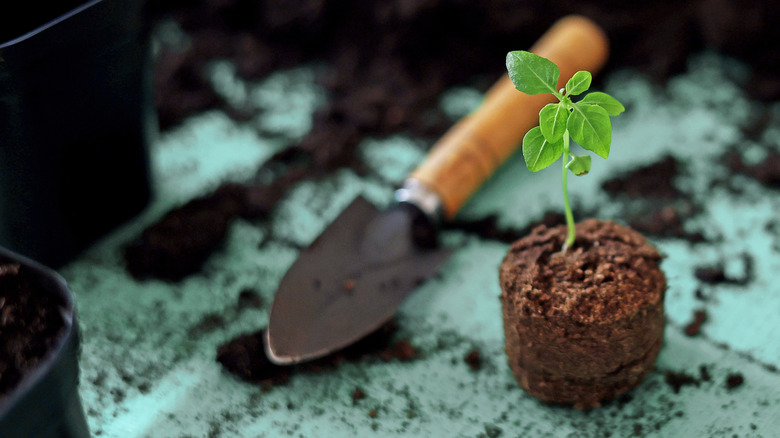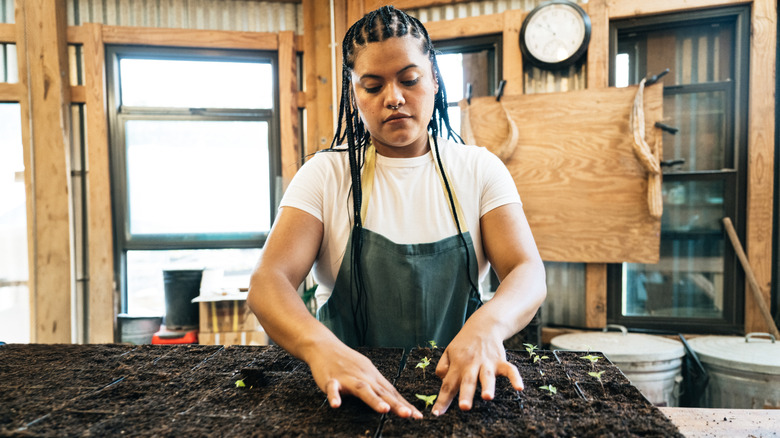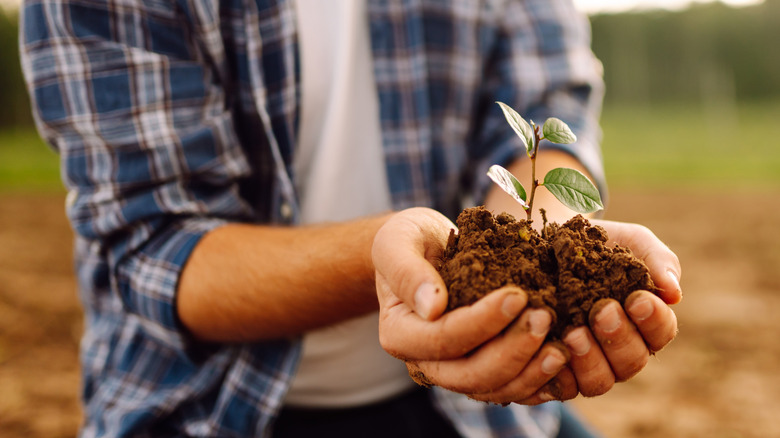Are Expensive Seed Starting Mixes Actually Worth Buying?
We may receive a commission on purchases made from links.
If you're curious about starting seeds instead of buying plants, you may be comparing all the seed starting mixes on the market. Many seed starting mixes advertise themselves with words like "premium" and "essential" to justify their prices, but are expensive seed starting mixes as "essential" as they claim? As with many things, when it comes to the price of a seed starting mix, more expensive does not necessarily mean better.
Regular potting soil is not the best starting medium for your seeds, as the fine roots sprouted from seedlings are not strong enough to push through such heavy soil. So, many gardeners turn to seed starting mixes to help their seeds germinate. To determine if expensive starting mixes were worth their prices, Epic Gardening conducted an experiment on TikTok comparing eight seed starting mixes from popular brands ranging from the most affordable to the most premium. Based on the even results across the board, the price of the seed starting mix had little impact on the speed at which the plants germinated or their overall health. If price did not affect the viability of each starting mix, what differentiates one from the other? The answer lies in the ingredients.
What makes up a seed starting mix
Choosing the right seed starting mix can be difficult, but using the right mix can contribute to increasing the seed germination rate. Wandering down the aisles of your local garden store, you will find some big-name brands like Miracle-Gro offering affordable prices, as well as artisanal brands offering less generous pricing. On the low-cost end of the scale, the mixes tend to offer more product, such as the 8 quarts you receive with the Miracle-Gro Seed Starting Potting Mix versus the 4 quarts you receive with the Rosy Soil Seedling Seed Starter Mix. The latter is approximately four times as expensive as the former, but Rosy Soil is more transparent about their ingredients, offering compost, worm casting, and mycorrhizae in their mix to improve seedling health.
Much of the appeal of the expensive seed starting mixes lies in the promise of "organic." When comparing mixes, United States-based organic growers should look for "OMRI Listed," which means the materials have been approved by the Organic Materials Review Institute (OMRI). This certification ensures there were no fertilizers, herbicides, or pesticides that are not approved by the OMRI present in the mix. The mix's organic status might not impact the health of your plant, but if you are growing edible plants like tomatoes or cucumbers, it may be an important factor in your mix choice. A brand may market itself as organic, but without the OMRI label, the word is meaningless.
Make a homemade seed starting mix
As the name implies, seed starting mixes are made from a mix of ingredients, none of which are soil. Forgoing soil lightens the seed starting mix, allowing the weak, developing roots of a seedling to pass through it easily. Most mixes include a combination of common ingredients that serve different parts of the growing process, with four ingredients appearing regularly — coco coir, perlite, vermiculite, and worm castings. Vermiculite and coconut coir, along with coir's alternative, peat moss, retain moisture in the growing medium, while perlite and its alternative, sand, help the medium drain to discourage fungal growth. Worm castings are optional, but they can be beneficial, adding microbes and bacteria that heighten oxygen levels.
The prepackaged seed starting mixes at your local garden store will include some or all of these ingredients, but the more expensive mixes will lean more toward being soil-less, while the economical mixes will ride the line between potting soil and seed starting mix. If the more natural aspects of expensive seed starting mixes appeal to you but the price does not, you might be better off making your own rather than buying it. Mixing your own medium will give you more for less, allowing you to focus your time and money on the plants themselves, taking your garden from drab to fab on a budget.


